First of all it is infrastructure. It is perhaps similar to scientific infrastructure that could be developed for working with life sciences, or for what is today called “growing matter”. There is a big fascination with the growing of building materials, hacking of biotechnologies, hacking of the life sciences and democratizing them, making them more accessible to the people. Why is this?
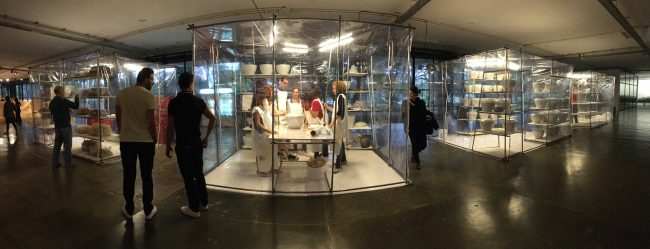
Some years ago, biology and computer sciences were specialist disciplines. Now with hacker culture, with democratization we have access to the “software”, so to speak. There is an open software movement. We can take technology into our hands. It’s no longer closed within military circuits, corporations or universities. We can create small-scale labs in garages; with the help of computers we can build new technologies and so forth.
Why is this so important? Speaking about the computer networks, it’s a foundation of building civic society. We have technology in the hands of small communities, and they can sustain themselves, publish their views, participate and so on.
A similar thing is happening with biotechnology nowadays. There is a democratization of that going on. There are critical issues of agency and trust at play here. First of all, with the life sciences and biotechnologies in the hands of corporations – can we trust them? In the capitalist condition, when the only aim and reason is profit, food can be poisoned, water can be poisoned. In that situation, one is forced to sustain one’s life – to take matter into one’s own hands.

In a way, our work is dealing with this urgency: how to democratize biotechnologies? How to show people through educational programs, through outreach attempts, how to build, develop, fabricate different technologies themselves, including the things that are “biotech”. As artists we want to intervene in these trends and demystify this kind of making.
To be more concrete, we are going after a very interesting and timely trend that could be called mycomania. There is a big fascination about mushrooms. Paul Stamets who has been working more than thirty years, popularized this. His idea is simple. He says that mushrooms are the next frontier. Mushrooms are, in fact, under-researched. It’s an incredibly huge kingdom. They’re neither plants nor animals. Mushrooms control many bodies. We have mushrooms in our bodies, inside and outside. We are colonized by fungi. Our soil is colonized. Our forests are managed by mushrooms. Mushrooms can kill or rejuvenate whole territories. Mushrooms can be vitamins, can be antibiotics, can be destructors, can be fantastic materials for filtration. Paul Stamets says that mushrooms can filtrate water 100 times more powerfully than any existing technology today. He is opening this frontier, which is very fascinating for us. To understand the power of mushrooms is very important.
With this project we are tapping into the ability of mycelium, which is the roots of mushrooms, in colonizing different substrates and creating new hybrids. In this case, new materials. We have developed an infrastructure and will experiment with different local substrates: sugar cane, corn, eucalyptus tree. We also wanted to use coffee, but we heard the harvest was not so good this year… We will make a material that has qualities very similar to foam.


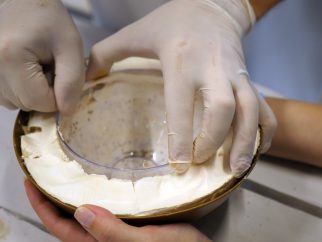
For us, the new frontier is to think how we can change the conventional materials that surround us, materials that are toxic for the environment; the production of those materials is also very toxic. Two of the biggest challenges for humanity (and the humanities) are concrete and plastic. Our civilization is very proud to have achieved such a huge production of plastic and concrete. Wonderful brutalist architecture in Brazil is made of concrete. And all this was great. But now we have come to the point where we realize the effect this has had on the environment. We have much more knowledge today than we had in fifties and sixties. Engaging in material experimentation or material production is no longer solely a matter for the material scientists and engineers, but is now humanists’ matter. It’s a matter for humanities, and therefore a matter for artists.
Coming to terms with the Anthropocene and understanding human impact on the environment, which we realizing now, is to understand eco-systematic relationships. Maybe fracking is good for getting gas, but it makes an impact on the water, and this water impacts living conditions, and this impacts migration and so on. To understand these eco-systematic relations you no longer can trust capacity and competence of one disciplinary field. I’m coming back to the idea of the artwork and artist, because we are interested in the capacity of art to connect different fields. Hopefully art can unfold this eco-systematic thinking. Eco-systematic thinking is at the core of understanding the Anthropocene – understanding relations and relationships between these different registers, different constituencies, different players and different causes. Up to now, the question of material in art was not essential in that sense. Artists were working with asbestos, with some Japanese lacquer techniques that are highly toxic. They didn’t know. But now we are coming to the point when we have to be responsible for the material from the perspective of what art is made of, to the extent of what materials are surrounding us in our built environment. To engage materials that can grow, to grow materials, is a very exciting idea, very poetic one. You can grow a brick for your house at home, and while growing a brick you can eat mushrooms. The mycelium makes the material and it grows the food. You do not need to go to the forest anymore, you can go home and eat your house. What a poetic idea!
Pedagogy is also important for us. As we build this infrastructure, we bring young people who will be introduced to the ideas surrounding the making culture of these materials.

We also make connections with the history of architecture – a very specific period of time in architecture that we call civic architecture, the “grand civic narrative” in architecture, which is brutalism. We are looking at a specific fascination coming from people like Antonio Maluf, the great Brazilian designer, who designed the poster for the first Sao Paulo bienal. In the fifties and sixties there was a great fascination with biology, but also computer sciences. Sequence, seriality, repetition, something what we later recognize in John Cage’s work, – a strong musical component shows up in Maluf’s graphic patterns. This is the point where computer science and biology meet. These amazing patterns become part of architectural expression. We think that this moment, when humanities meet sciences, which was once great narrative in sixties and seventies, has been lost. This is what we wish to bring back to the discourse of art.


There was a big fascination with biomimicry and morphogenesis described in the book of D’Arcy Wentworth Thomson “On Growth and Form”, and brought to the discourse at the turn of the 20th century. There we look at nature more visually, studying different patterns, trying to decipher them and their meaning. But now, with more knowledge of eco-systematic relations, which again comes from cybernetics, from an understanding of feedback loops, we no longer understand just the visual patterns of nature, but we understand their functionality. We no longer look at how a bee looks or how it is constructed, or how it dances, but we look at how it is reacting and how it understands, perceives coming danger, which we can’t perceive as humans. We definitely have to study nature and its patterns beyond biomimicry. Biomimicry is the first step, valued maybe a hundred years ago, but no longer. Perhaps we have to regain that focus. If we talk about indigenous cultures, they have much more of that knowledge which we gave up on the way towards the civilization.
The technological development that started after the WWII had fantastic ideas inspired by discourse in the humanities. One of those ideas was to connect the human body with the environment. That was in the core of thinking at MIT. The idea was fueled by the technologies of the time. When Americans first sent Apollo and took that first photograph of the Earth, they extended the hand with the help of Apollo and made the first selfie. Again, think feedback loop. We are sensing ourselves with the help of cameras, and sending this image back to ourselves. We realize that with the help of technology we can create much stronger relationship with our environment. It’s a beautiful idea. Instruments, sensors were developed after this idea. What happened eventually is quite tragic. The shift from extending the capacities of our bodies to connect us with environment paradoxically turned back, and we no longer connect ourselves with our territory. We are making just a mirror image of ourselves, but not of our surroundings. Now the next biggest frontier is to reestablish this link with environment and with territory. It’s a historic task. We have a territory and the map. How to recalibrate that to have the embodied experience of the territory and the surrounding? But contemporary technologies dissociate us even more. We are living in maps: in a map of social network, in the google map, we can trace, locate, position ourselves. We know each other from these maps, but not from the territory. You play pockemon. People are even dying because they are so dissociated from their surroundings. It’s quite symptomatic. It’s like Chernobyl, but in other terms.
We feel mycomania all over. On the way to San Paulo we stopped in Boston. We went to the shop and look what we found: mushroom coffee. It’s just crazy. You find cacao, coffee, lots of products with mushrooms. It’s like an obsession. Mushrooms can help to boost your brain, help to get energy, filter toxins. It’s another big frontier. People discovering mushrooms again. A lot of this knowledge comes from indigenous people. Their knowledge and links with the environment were never interrupted. In that respect I could say we are little bit indigenous (not that civilized, in a good way). In Lithuania, we have a very strong tradition of mushroom foraging. Everyone goes to the forest. People know when and where to go. And it’s big competition to see who will find the best and biggest. You have to wake up early, at 6 AM or so, with the first light, when it comes. If you come at 9 AM or later, nothing is left. Even generations of people from the cities still maintain the tradition, going to the forest on the weekends, just for one of the days. There are reports on the newspapers and on social media everyday about the discoveries in the forest, who found the most beautiful and biggest porchini. Also new species are being found. A couple of years ago we went to the botanical institute and spoke with a mushroom specialist there. He told us interesting stories about how mushrooms migrate. For example, how species originating in Canada reached Europe in three years. It’s still a mystery, how. Migrating birds might carry spores on their bodies. We are living in this global eco-system. The spore, tiny thing, without the aid of humans, can travel thousands of kilometers just in three years. That mushroom was very particular – it colonized an enormous territory of the forest and killed it. One mushroom, not a colony of them. It has very long mycelium and can colonize territories. The only way to fight it: find another fungi. There is DNA programing involved in that. It’s possible to program mushrooms to eat some things. Or there are so called bio-destructor mushrooms. It often happens with architecture if buildings are not kept properly, certain mushrooms colonize the space and it’s bad for human health. Chemicals are sprayed. But there is a more advanced technology: finding the right fungi to fight other fungi. It is another interesting frontier for science. Artists are always interested in inventing things and expanding our reality. Therefore experimentations with technology and biology are very interesting for artists as well. They open new possibilities, new pedagogies, new materials and new imaginations about life.
Here in Sao Paulo we went to meet Edison de Souza and visited his company Brasmicel. He is one of the best mycelium specialists in Brazil. He’s been working with mushrooms for many years and comes from a botanical institute, from a mushroom research group there. Later he went to develop organic farming, with the idea to work specifically with mycelium. So it’s not really a mushroom farm, even though he does grow mushrooms for himself and his family. Edison is almost programing the back end of the process. He takes a piece of mushroom, inhabits it in agar in a petri dish, the culture starts growing and multiplying there, and then he seeds them in specific substrates to develop mycelium. Then he uses that mycelium for spreading and preparing to grow mushrooms. Since he is a scientist, not simply an agricultural engineer, he is tracing genealogies of each specific species, groups and families. For example, in this project we are working with oyster mushroom (pleurotus ostreacus). Edison has ninety different species of that. We expected to find four or five pleurotus ostreacus – one yellowish, one beige, one brownish and pink. But this guy said he had ninety. And he told us we have to work with number two: PO2. And we could trace production of that PO2 more than thirty years back. He’s been working with the same mushroom for that many years, cloning the same mushroom again and again for many generations, testing how strong it remains and if it’s worth keeping it in production.




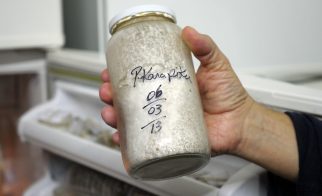



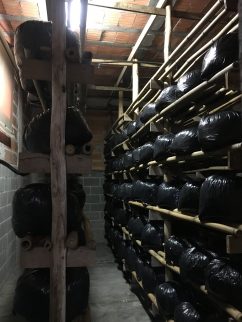

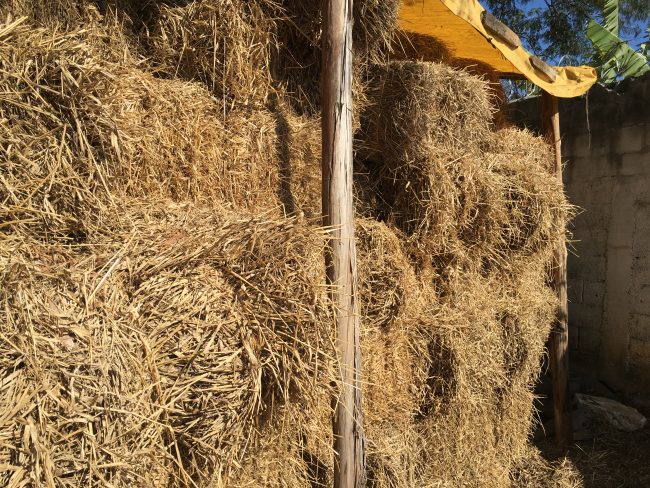


Mushrooms come from outer space. This is what scientists are claiming. They tested that in sixties, when they took spores from mushrooms and sent them out into the cosmos and exposed them to radiation, severe temperature, everything. The spores survived. A mycelium does not need oxygen to grow. Mushrooms have two organs: one for multiplication and another for communication. Mycelium functions as conduit for nutrition, but also as communicator. Other species are using that network. When we talk about interspecies dialogue, for example, trees use mycelium networks to inform each other or other species about incoming dangers. It’s like a communication network. Paul Stamets calls mycelium the “internet of the earth”. It’s the internet of plants, bugs, worms. Of course, it’s slow communication, but scientists have proved that this is happening. They knew about the communication happening, but they didn’t know it occurred via mycelium. There are so many things that we are only now starting to realize.




